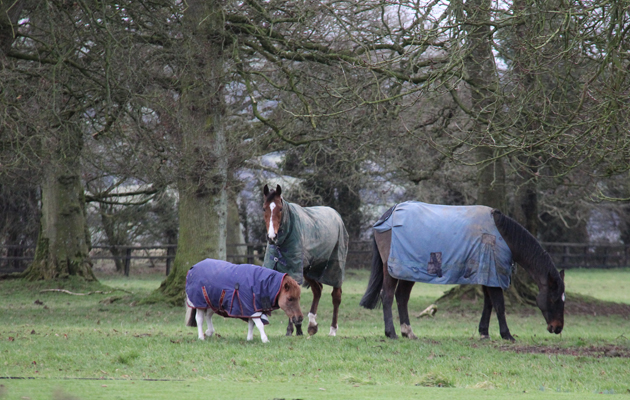Over-rugging horses has been a particular bugbear of mine for several years. I am not alone. At the recent World Horse Welfare conference it was cited as one of the reasons that we have an epidemic of overweight and obese horses.
Not that long ago, rugs were the preserve of clipped horses only. They had two rugs; a New Zealand to wear outside and a jute stable rug worn with blankets underneath for inside. And when turned out for holidays they wore nothing but their own coat — and survived.
Now there is barely a horse in the land that doesn’t have a veritable wardrobe of rugs for every occasion and climate. Even unclipped native types are commonly seen wrapped in a parcel of Gore-Tex while many horses live their whole lives in the confines of a rug — generally for owners’ reasons that their horse must be cold, suffer from sun or flies or because they might even get dirty. How these horses must long for freedom and a naked roll.
Rugs mean horses get too hot, and do not use the calories that they are often overfed. They can also create the perfect warm climate for parasites such as lice. How often do we see a rugged-up horse suffering in the warmth of the day because it was chilly when his owner left for work?
Rugs for foals too
And since when did it start to become routine for healthy foals to wear rugs too? And why?
Foals have managed to live and thrive for goodness knows how many hundreds of years without being swaddled in waterproof nylon by day and quilted polyester by night, to say nothing of the added danger a rug poses to a young, inquisitive horse. I wouldn’t sleep if I had a foal in a rug. Was it caught up on the fence? What if it slipped over its head or the foal’s legs were caught in the straps? It doesn’t bear thinking about.
Domestic horses are still basically the same wild horse of aeons ago. They have been designed to have their own well-adjusted means of thermoregulation — which means that they can control their own body temperature without the addition of a rug.
Goodness knows what happens to their thermoregulation mechanisms when from the beginning of their lives they are confused or working overtime.
As nature intended
The basic method of thermoregulation is the coat which, if left alone, will adapt to the external climate. In winter the horse will grow a thick coat, which is more efficient if the mud is left on.
A horse is well adapted to coping with cold. A foal with a rug will not grow a coat. This is even worse if the poor foal is stabled. Not only will it be too warm because of the rug and therefore not using calories to keep warm, but the calories will also be put in store because it is not moving around either. It’s a recipe for obesity and poor musculoskeletal development.
To breed a useful horse, foals and youngsters should live life as nature intended. They need the space and freedom to move and eat 24 hours a day, as well as company, preferably in a herd of horses of a similar age.
Foals should not be brought up in the world of small paddocks with limited grazing, isolation, DIY stable yards, over-petting, rugs and three meals a day. They are horses, not lap dogs.
Anyone without the acres necessary to keep a foal or young horse outside for the majority of its formative years should not be breeding or keeping one.
Ref: Horse & Hound; 3 December 2015



